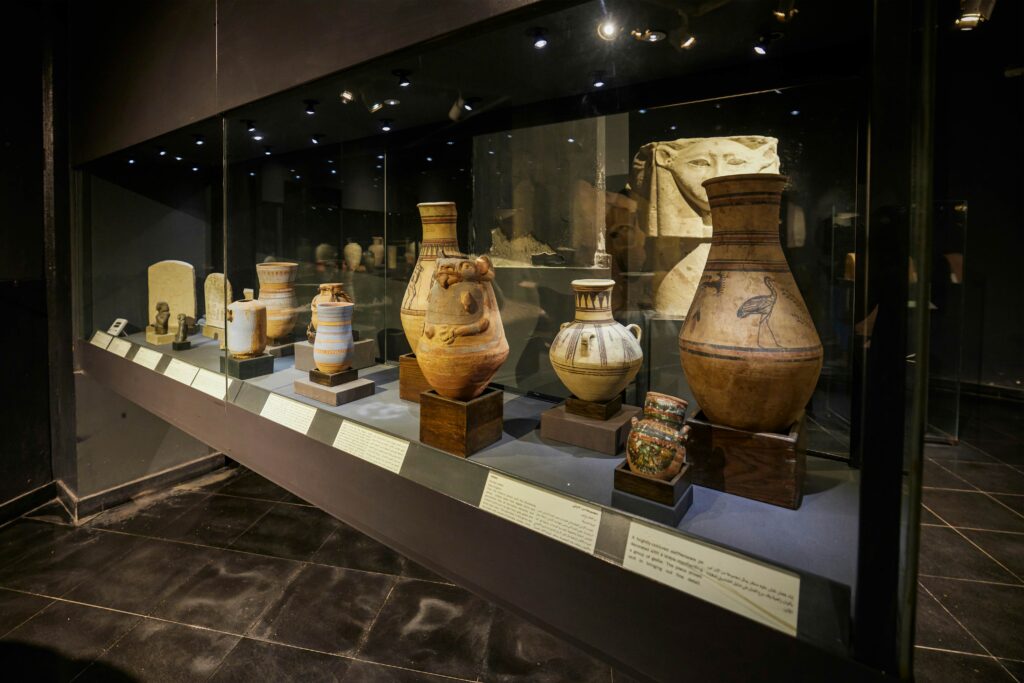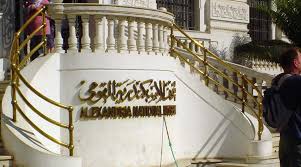Alexandria National Museum is more than just a building packed with artifacts — it is a compelling trip through Egypt’s long and multi-layer history. Located right in the heart of Alexandria, this museum is a cultured marvel where one finds the weaving of Pharaonic, Greco-Roman, Coptic, Islamic, and Modern Egyptian heritage under one roof.
So, whether you are a historian at heart, a traveler-that-wants-to-explore, or a local eager to reconnect with his roots, the Alexandria National Museum will offer you a truly immersive experience concerning Egypt’s ancient and modern identities.
Location & Historical Background
The museum is situated in a nicely that has been exquisitely restored, originally Italian-styled mansion that belonged to a wealthy timber merchant, and later on was used as the American Consulate. The location is given on Tariq Al-Horreya, formerly called Rue Fouad, an ancient and one of the iconic streets in Alexandria.
The museum was after much delay officially opened in 2003, and since then, it has essentially come to the forefront of the city’s cultural revival. The museum houses a small yet rich collection of about 1800 artifacts carefully selected to tell the story of Egypt through the ages, with particular attention being paid to assessing the role Alexandria has played as a cultural crossroads.
What Makes Alexandria National Museum Unique?
Unlike the bigger and more expansive museums in Cairo and Luxor, the Alexandria National Museum caters to a more personal and intently focused experience for its visitors. Displays are well illuminated and marked in Arabic and English. They are neatly arranged in chronological order on three main floors:
First Floor: Pharaonic Era
The journey starts with ancient Egypt: statues of pharaohs, canopic jars, mummies, and tools of the trade that bring to life a civilization going back more than 5,000 years. Find relics stretching from the Old Kingdom to the New Kingdom, with top highlights being:
A magnificent mummy, preserved in near-perfect condition, in its original coffin.
A golden mask that is vaguely reminiscent of that of King Tutankhamun.
Carvings and reliefs depicting ancient gods such as Anubis, Horus, and Osiris.
Second Floor: Greco-Roman Imprints
The second floor immerses you in the world of Alexander the Great, Cleopatra, and the Roman emperors. Here you see:
Busts of Roman rulers.
Greek-style statues with Egyptian symbolism.
Pieces from Alexandria’s underwater treasures thought to be from the Royal Quarter submerged in the harbor.
An enchanting statue of Serapis— the Greco-Egyptian god worshipped in Alexandria.
This floor is representative of the unique East meets West heritage—an ancient city that rivaled Rome in power and prestige.
Third Floor: Coptic, Islamic & Modern Egypt
The third floor is the stage for the story of Coptic Christianity, the Islamic Golden Age, and the growth of Modern Egypt. It shows:
Beautifully illuminated Coptic manuscripts and icons.
Islamic ceramic tiles, coins, and swords.
Modern royal Egypt, complete with photographs, garments, and furnishings from the Muhammad Ali dynasty.
There are multimedia components introduced in the museum plus an interactive layout to ensure even non-historians grab the flow of history.

Tips for Visitors
Opening hours: Generally from 9 a.m. to 4 p.m. (Closed on Friday)
Entry Fee: About 100 EGP for foreigners; 20-40 EGP for Egyptians and students
Location: 110 Tariq Al-Horreya, Alexandria
Photography: Allowed for a small additional cost
Best Time to Visit: Morning hours when it’s nice and quiet for some contemplation
The Reasons to See the Place
As many tourists praise the city for the seafront charm, the Alexandria National Museum instead promises a deeper soul. It is a museum that tells the tale of a city whose Great Library existed for a while under the shadows, where Cleopatra ruled for a minute, and whose past still echoes with the present.
It is not going to take hours to experience, but you’re surely gonna leave feeling like an hour’s worth of time has passed through all major phases of Egyptian history.
Alexandria National Museum: A Journey Through Egypt’s Timeless Heritage
Alexandria National Museum: A Journey Through Egypt’s Timeless Heritage should be part of those attractions anyone willing to grasp the beating heart of Egypt’s second-largest city. This is not merely a museum — it is a narration, an archive, and a living testament to how diverse, rich, and enduring Egyptian identity is.
Those who find themselves in Alexandria and want to witness history not just as facts but as living memory should make the Alexandria National Museum their first stop.




